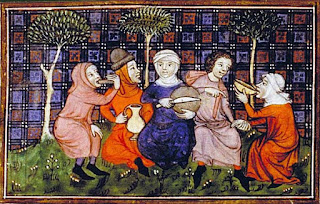Whole-wheat bread made from 100% whole-wheat flour is higher in fiber, vitamins, and minerals than breads made from refined wheat.Most commercially made breads labeled as whole wheat in the US, actually have very little whole grain wheat. They’re mostly made from white flour with caramel color added to give the illusion that they have more whole wheat than they actually do.
Humans have been baking bread for thousands of years. Wheat was domesticated in the Fertile Crescent, an area in the Middle East, known as one of the cradles of civilization ,an area where farming first emerged.
You could say bread gave rise to society as we know it today. It played a key role in the formation of human society. As cultivation spread from the Middle East towards Europe, North Africa,and then Asia it led to a more structured society, towns were created, and a less nomadic lifestyle was possible. This is turn led to more shophisticated and organized forms of society. In the Amercas this also happened with maize and in China with rice.
i
Remnants of a flatbread made from wild wheat and wild barley,dating back to between 14,600 and 11,600 years ago have been found in the Black Desert of Jordan. Bread dating back over 9,000 years has also been found at neolithic sites in Turkey and Europe. There has been much evidence of bread baking in ancient Egypt with sourdough being their preferred and primary source of leavening.
In medieval times in Europe bread was part of the table service, with food served on a piece of stale bread called a trencher, as a sort of absorbent dish. When you were done with your meal, you could eat your dish!
Up until the nineteenth century bread in Europe was made with extremely harmful ingredients like chalk,sawdust, alum, plaster and even clay.
That came to an end in the late 1800’s with the passing of the Food Adulteration Act in Britain. It was however more difficult in the United States as different states have different regulations for bread making.
Bread baking was industrialized in the early twentieth century. Whole grain breads were discovered to have higher nutrional content in that time period as well.
Chemical additives are used in commercially prepared breads to speed up mixing, rising time and enhance texure.Some very good reasons to make your own. Aside from that your bread will be far tastier, there is nothing better than a nice hot loaf of bread fresh out of the oven! Check out the video posted below for an amazingly easy 100% whole wheat bread recipe with easy to follow instructions.
Ingredients
3 1/2 to 4 cups of whole wheat flour
1 1/2 cups of water
1 tablespoon of honey
1teaspoon of salt
1 package of dry active yeast.
2 tablespoons of olive or vegetable oil
Directions
In a large bowl add the water, honey, oil, salt, and yeast mixing well until everything is thoroughly dissolved. Cover and let sit for 5 minutes or until you can see the yeast bubbling on the top.
Gradually add in flour until firm enough to knead. Knead for about five minutes by bring the outer edges of the dough to the center and pressing down firmly.
Place dough in a lightly oiled bowl, cover and let sit for 30 minutes.
Knead a bit until dough is smooth, about 3 to 5 minutes. Cover and let rise for 40 minutes or until dough has doubled in size.
Warm oven slightly, then turn off. (only needed in cold weather)
Place dough in lightly greased pan, brush with water, make several cuts on top, sprinkle with sesame seeds (optional) then let rise a bit more in an oven that is warm but not turned on.
Preheat oven to 350 degrees farenheit
Once dough has doubled in size bake at 350 degrees for about 15 to 20 minutes or until golden brown on top.
Set on a wire rack to cool.
Slice and enjoy!





No comments:
Post a Comment